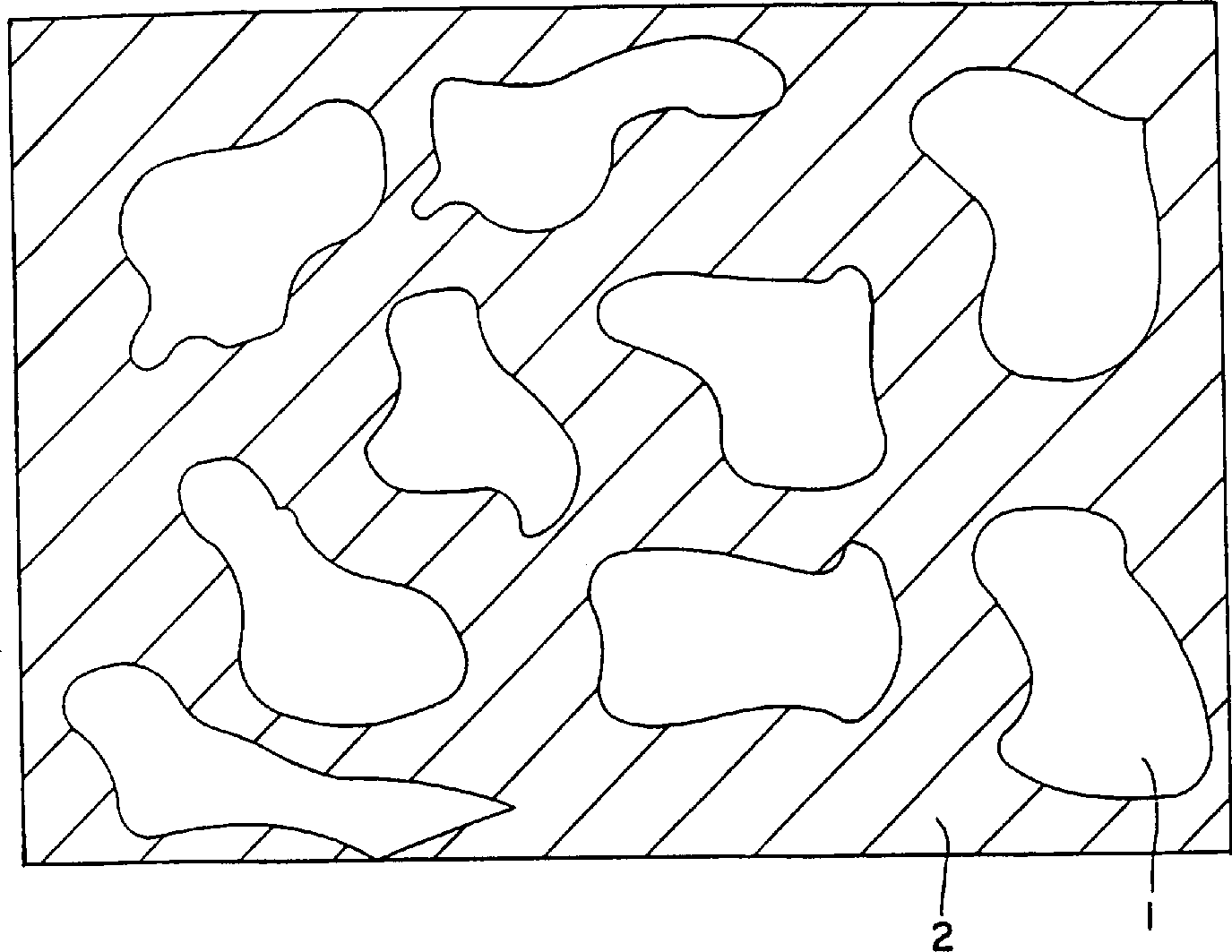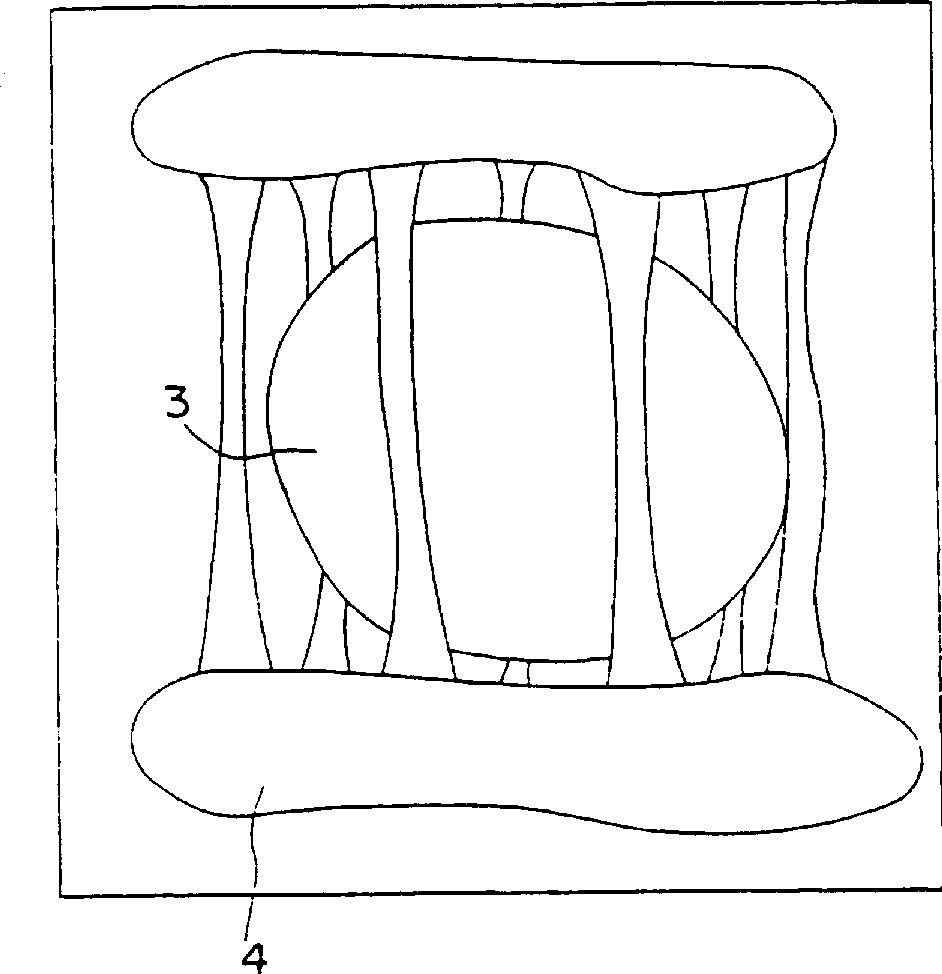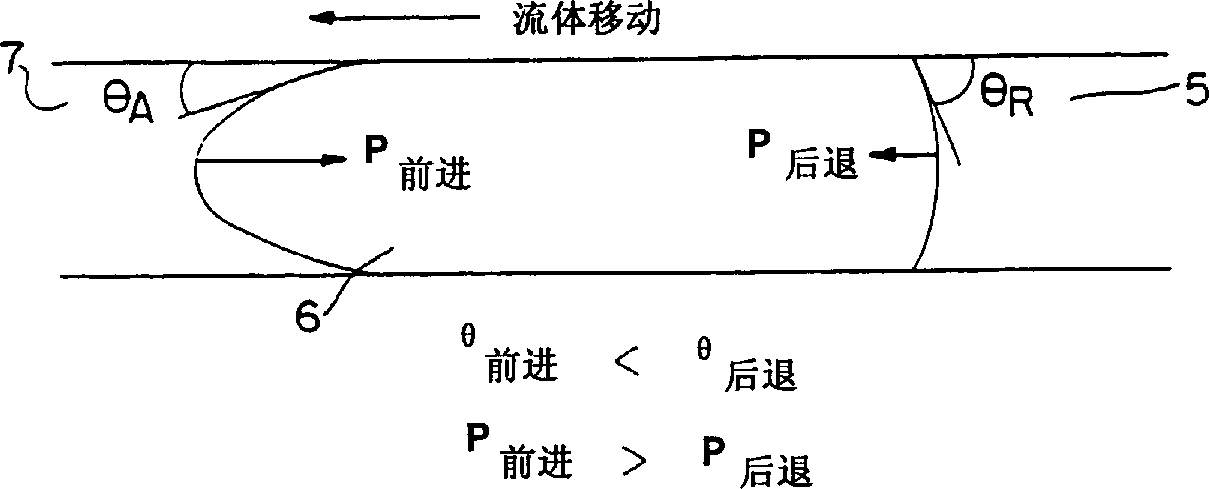Vibration damping composite material
A technology of damping materials and composite materials, which can be applied in the direction of shock absorbers, shock absorber-spring combinations, solid shock absorbers, etc., and can solve the problems of mechanical stability limitation of shock absorption performance
- Summary
- Abstract
- Description
- Claims
- Application Information
AI Technical Summary
Problems solved by technology
Method used
Image
Examples
test approach 2-
[0114] Test Method 2 - Direct Determination of Dynamic Modulus in Fibrous Film Geometry
[0115] While relative comparisons of damping performance can be made by determining the damping performance on a steel shim in 3-point bending, the losses and storage modulus of the damping composite can also be determined directly. Although direct measurements in a bonded system do not employ this test, direct knowledge of these base material values is useful in predicting performance in a variety of applications.
[0116] The specific DMA test method used to determine the dynamic loss and storage modulus of a composite material involves cutting the material into strips 0.635 cm wide by 3.0 cm long. Then sample (53) as Figure 15The clamp is shown in a DMA test fixture (54). The standard jaw face width used was 1.25 cm by 0.38 cm thick. The standard metric length (distance between jaws) used in the tests was 2.3 cm. The sample is then placed under a static force sufficient to preve...
example 1
[0151] A composite material is made from two separate components. The first component is a viscoelastic damping material sold by E.I. DuPont DeNemours as a PTFE solvent (code designation TE-5039A). Chemically, the damping material is an oligomeric perfluorocarbon compound, the oligomeric molecular weight distribution of which is primarily determined by the production and separation processes used in its manufacture and purification. The particular lot of material used in this example (Lot 59420-2) has a glass transition temperature (determined by DuPont DMA analysis) of approximately 2.3°C. At room temperature, this oligomer will flow slowly to fill a container, ie after sitting there for several hours. As the temperature increases (approximately around 50°C), the matrix becomes more fluid and easy to pour. Additionally, the fluid forms a contact angle with the PTFE that is less than 90 degrees and naturally wets the open porous PTFE material. Although this material has hig...
example 2
[0160] To demonstrate the ability to tailor composite properties by manipulating the viscoelastic component, a second composite was made using the same expanded PTFE tape as in Example 1, except that a different molar weight of fluoro-oligomer was used for vibration damping Element. In addition, the oligomer used was sold by E.I. DuPont DeNemours under the designation TE-5039A, but a different lot (lot 59540) was chosen because of its significantly higher molar weight. The glass transition point of this material, as measured by DuPont, was 9.1°C, significantly higher than that of the oligomer used to make the Example 1 sample. As expected, a higher glass transition temperature indicates greater mechanical stability with respect to cold liquid flow. However the material in pure form is still difficult to stabilize under normal vibration damping and when the material is left in a container for several days (at room temperature) it will flow to conform to the shape of the contai...
PUM
| Property | Measurement | Unit |
|---|---|---|
| thickness | aaaaa | aaaaa |
| thickness | aaaaa | aaaaa |
| thickness | aaaaa | aaaaa |
Abstract
Description
Claims
Application Information
 Login to view more
Login to view more - R&D Engineer
- R&D Manager
- IP Professional
- Industry Leading Data Capabilities
- Powerful AI technology
- Patent DNA Extraction
Browse by: Latest US Patents, China's latest patents, Technical Efficacy Thesaurus, Application Domain, Technology Topic.
© 2024 PatSnap. All rights reserved.Legal|Privacy policy|Modern Slavery Act Transparency Statement|Sitemap



